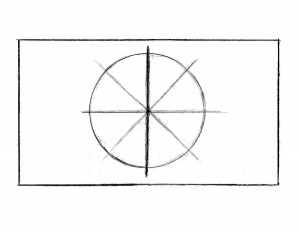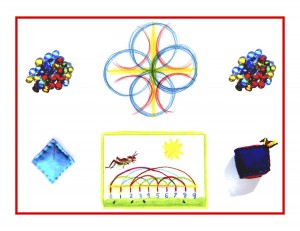Day 55
For one year, 365 days, this blog will address the Common Core Standards from the perspective of creating an alternate, ambient learning environment for math. Ambient is defined as “existing or present on all sides, an all-encompassing atmosphere.” And ambient music is defined as: “Quiet and relaxing with melodies that repeat many times.”
Why ambient? A math teaching style that’s whole and all encompassing, with themes that repeat many times through the years, is most likely to be effective and successful. Today’s post will focus on the Common Core Geometry Standard #3 which will appear in blue, followed by its ambient counterpart.
Geometry 1.G
Reason with shapes and their attributes.
Partition circles and rectangles into two and four equal shares, describe the shares using the words halves, fourths, and quarters, and use the phrases half of, fourth of, and quarter of, describe the whole as two of, or four of the shares. Understand for these examples that decomposing into more equal shares creates smaller shares.
The Waldorf method waits until Grade 4 to introduce fractions because the stages of child development determine the time frame of the curriculum. There are solid physiological reasons to wait until age 7 to begin formal teaching, and there are parallel reasons at every stage and age to introduce concepts at the optimal time. Every one of the child’s growth stages marks a significant step away from childhood. The Waldorf method recognizes and heeds these milestones as the drivers of what’s introduced when. For example, creation stories and housebuilding are told and taught in Grade 3 because at age 9, the leave-taking from the garden of childhood is especially intense. Creation stories address this leaving the garden as another step into the world, while supporting accompanying feelings of loss with the tools of living on the earth: gardening, housebuilding, and other useful crafts.
Fractions wait until Grade 4 because they echo the feelings of separation that manifest at that age. Everything in Grade 1 is steeped in the holistic. The circle is broken up into parts, but from a very different angle. When the numbers are introduced, a piece of fruit is cut up to show how 1 becomes 2, 2 becomes 4, and 4 becomes 8. The form drawing at the bottom of the page represents this concept. Wholeness is key now, and though many circles, squares, rectangles, triangles, hexagons, octagons, and more will be partitioned into two and four (and more) equal shares with form drawing, they are not equated with fraction terminology.
Faith and trust in the child, the teacher or parent, and the things of the world that can reveal themselves in due course and at just the right time is the golden rule. Because true knowledge ensues in an environment dedicated to imaginative, creative knowing, where student and teacher alike surrender to the ensuing of that knowledge as a worthy goal. As we leave geometry, please be assured that all the Common Core asks and so much more will be covered by the excellence that is form drawing. On to the numbers tomorrow!













